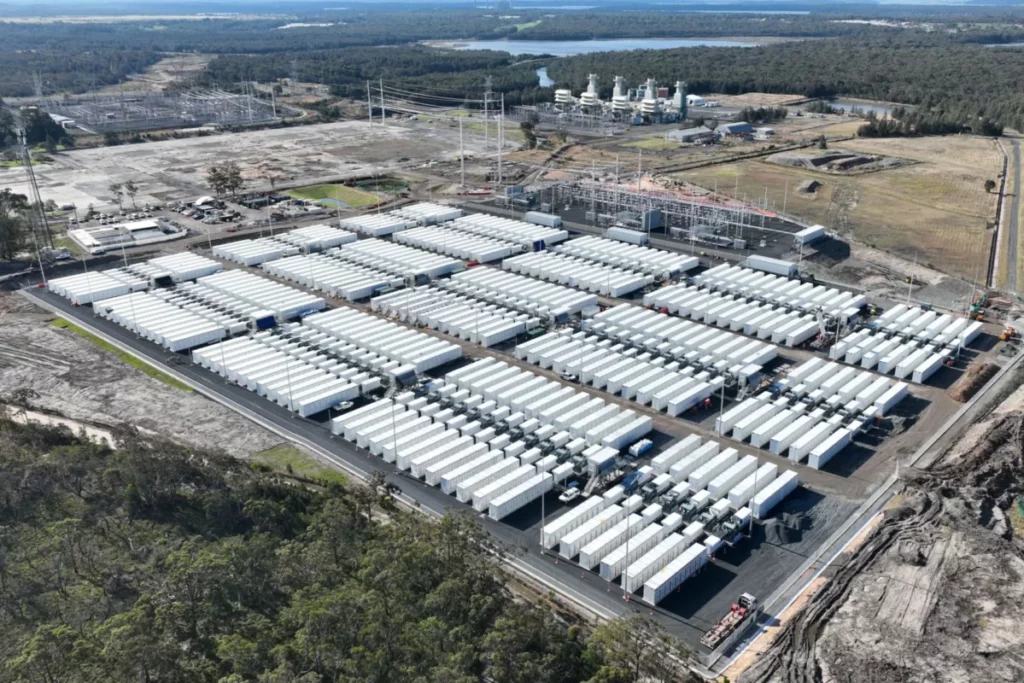
“We need some form of policy or expansion of the Capacity Investment Scheme (CIS) for long-duration energy storage,” Nick Hawke, director of Australia’s Clean Energy Finance Corporation (CEFC), tells ESN Premium.
Discussing the trends witnessed in the National Electricity Market (NEM), which covers Australia’s eastern and southern states, Hawke quickly notes the need for long-duration energy storage (LDES) technologies to provide grid reliability as further coal-fired generation is withdrawn.
“What the CIS isn’t providing is a solution to the long-duration energy storage, so there’s still nothing for that, and just looking ahead beyond the build out of short-duration storage and renewables, we’re going to need some long-duration energy storage in the system,” Hawke says.
“What we need is some form of policy or an expansion of the CIS to deal with that long-duration storage gap.”
Try Premium for just $1
- Full premium access for the first month at only $1
- Converts to an annual rate after 30 days unless cancelled
- Cancel anytime during the trial period
Premium Benefits
- Expert industry analysis and interviews
- Digital access to PV Tech Power journal
- Exclusive event discounts
Or get the full Premium subscription right away
Or continue reading this article for free
Although the CIS has not supported long-duration energy storage projects, mainly providing contracts for 2- 4-hour duration battery energy storage systems (BESS) alongside renewable energy projects, Hawke says the initiative is still positive for Australia.
Readers of Energy-Storage.news will likely be familiar with Australia’s CIS initiative, which supports Australia’s transition to a low-emissions electricity grid while ensuring a reliable electricity supply during peak demand periods.
It encourages investment in technologies that complement renewable energy, such as battery energy storage, pumped hydro and other forms of dispatchable generation.
The CIS offers financial incentives to investors with dispatchable energy projects, including revenue guarantees and capacity payments. Previous tender rounds were frequently oversubscribed, which led the Australian government to increase the target from 32GW to 40GW last week.
The need for government support for long-duration energy storage
Despite this, the CIS does not do enough to support long-duration energy storage, which could dampen opportunities for the technology to be rapidly scaled up in the near future. Hawke believes government intervention would be the only way to get these projects off the ground.
“The only way I see long-duration energy storage projects becoming viable is through some form of government support that values that. At the moment, a 2-hour duration battery makes a lot of commercial sense, and a 4-hour duration is making commercial sense too,” Hawke adds.
One of the primary support measures introduced at a state level for long-duration energy storage technologies is the Long-Term Energy Service Agreement (LTESA) contract tenders in New South Wales.
For instance, the latest tender, which ran in February, saw 1.03GW/13.79GWh of projects offered LTESAs. This was spread across two BESS projects and a pumped hydro energy storage (PHES) site located 35km west of the regional town of Mudgee.
Energy storage is ‘ahead of where it was expected to be’
Due to its vast renewable energy resources, such as solar PV, Australia has rapidly scaled its battery storage capacity and has become one of the most investable locations globally for the technology, industry experts have said.
Indeed, just earlier today, it was announced that developer Akaysha Energy had brought online the first stage (350MW/700MWh) of its ‘giant shock absorber’ Waratah Super Battery, becoming the biggest BESS asset in Australia. CEFC had provided funding for the project in 2023.
It surpassed other operational utility-scale BESS, such as the 300MW/450MWh Victorian Big Battery and the first stage of the 270MW/540MWh Western Downs BESS in Queensland.
With gigawatt-scale BESS project developments being revealed almost weekly in Australia, it is clear that the country is one of the leaders in the energy storage market, something Hawke is keen to highlight.
“We’re seeing a really strong pipeline of transactions, which has also been encouraging. And the BESS space is probably one area in the transition that I would say is well ahead of where we [Australia] certainly have thought it would be,” Hawke says.
Australia’s expertise in energy storage and renewable energy has also made it a frontrunner in testing grid-forming battery storage technology.
Tesla’s head of business development and sales, Megapack APAC, Shane Bannister, stated last week at the Clean Energy Council’s Australian Clean Energy Summit 2025 in Sydney that “I don’t think we’re [Tesla] going to sell another battery in Australia that’s not grid-forming.”
Fluence’s Rob Hills, APAC vice president of engineering and commissioning, and Sam Markham, growth manager, Australia and New Zealand, also deemed the technology a trend in the NEM for the foreseeable future in a contributed feature earlier this year.
Hawke notes that the CEFC has supported grid-forming inverter technology, and with more projects being built, he is excited to see the role these could play in Australia.
“We’ve funded a couple of projects now that have or are proposing to use grid-forming inverters. It’s great that they’re being built now. We’ll be at a point soon where they’ll be able to demonstrate the value to the grid and systems trends, and then hopefully from that, they’ll become a bit more of a norm and be able to participate in certain markets,” Hawke tells ESN Premium.
Australian transmission system operator Transgrid recently announced that grid-forming BESS and synchronous condensers will form the ‘heartbeat’ of the New South Wales power system, to deliver 5GW by 2032/33.
Grid-forming technology will be one of the key discussions at our publisher, Solar Media’s, upcoming Battery Asset Management Summit Australia 2025, which will be held from 26 to 27 August in Sydney. You can get 20% off your ticket using the code ESN20 at checkout.
The headline of this article has been updated to better reflect the contents of the interview.
